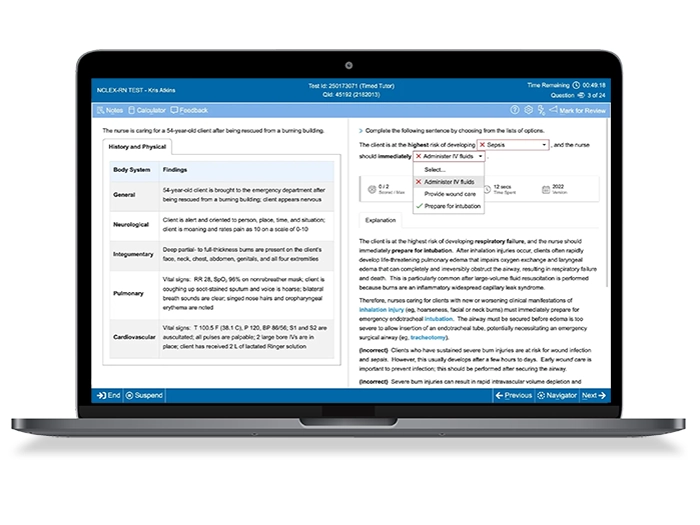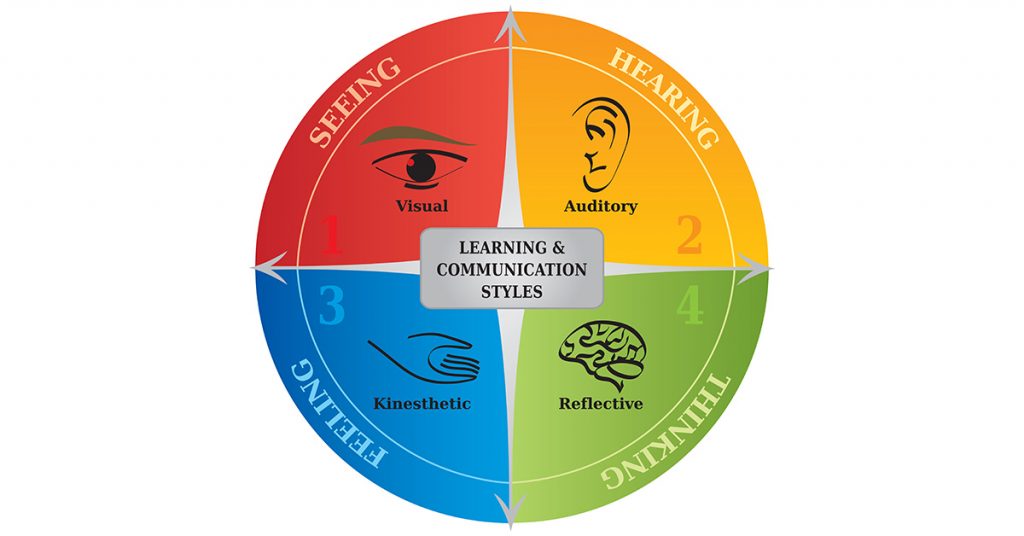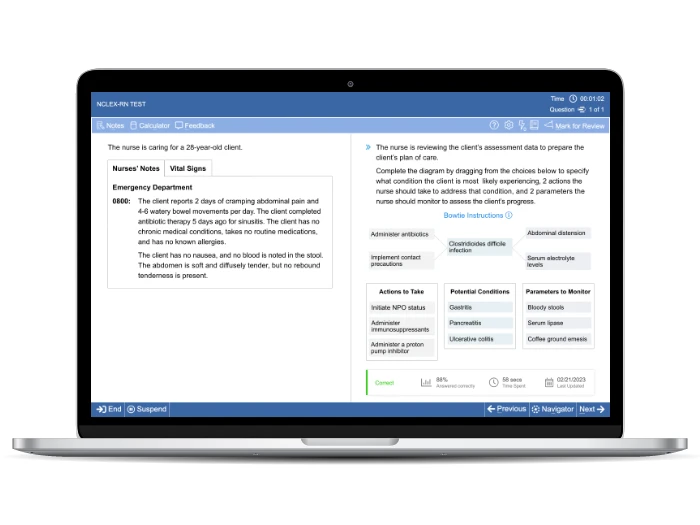If you’ve ever bought an article of clothing that boasts “one size fits all,” only to find it’s either laughingly large or embarrassingly tight, you know there are very few times in life where something fits everyone.
Learning is no exception. Learning never has been, and never will be, a one-size-fits-all proposition. From elementary school through college, students process and retain information differently.
The sooner you discover your learning style, the sooner you’ll decrease your scholastic frustration, improve your individual study, and enjoy new levels of academic success.
This is particularly true when preparing for high-stakes exams like the NCLEX-PN® or NCLEX-RN®. These exams require months of quality and efficient study, and study sessions are most effective when you’ve identified and utilize your individual learning type.
In 1987, Neil Fleming, a New Zealand educator, designed the VARK Model, which is commonly referred to when speaking about four distinct and recognizable learning styles. VARK is an acronym for these types of learning — Visual, Auditory, Read/Write, and Kinesthetic.

See if you recognize yourself in one of the overviews for these four learning styles:
Visual Learners
Visual learners need more than just hearing an explanation, they want to see the material. This type of learner appreciates a problem being worked out on the board in front of them.
Engaging videos on high-yield topics, vivid medical images and illustrations, highlighted flashcards, diagrams, and detailed notes increase the visual learner’s ability to retain information.
Auditory Learners
Auditory learners are the students who love to listen. This learning type benefits from reading their notes aloud or listening to another student read their notes.
One easy way to identify an auditory learner in today’s culture is to find someone who loves podcasts. If a person learns more by listening to podcasts than by reading books, that person is most likely an auditory learner.
Study groups are extremely advantageous for auditory learners. Discussing content, exchanging perspectives on information, hearing another student read aloud to the group — these are all beneficial for this learning type.
Read/Write Learners
Read/write learners best process information exactly as you might think, through reading and writing the content. This type of learner is all about text. A read/write learner prefers textbooks over lectures, reading NCLEX practice questions and detailed explanations over discussions.
If a student loves to explore blog posts, consume books, journal their thoughts, and read over their classroom notes, this person most certainly falls into the read/write learning category.
Kinesthetic Learners
Kinesthetic learners (aka “tactile” learners) love to physically interact with the material being taught. They learn by touching, feeling, interacting.
For nursing students, kinesthetic learners prefer clinicals over didactics. Because of the hands-on nature of the clinical learning experience, this type of learner thrives in the clinical environment.
Passive learning (sitting in the classroom, listening to lectures) is of little value to the kinesthetic learner. They much rather prefer active learning and hands-on training to meet their educational goals.
After reading those overviews, which type of learner are you? It’s probable that you are a combination of different types. We can all learn through different techniques; however, there are certain ways each of us learns more easily according to our learning styles.
Differing Learning Styles and the NCLEX®
Though a majority of the questions on the NCLEX exam are multiple-choice items, not every question is given in this format.
The NCSBN includes a number of questions on the test that are given in an alternate item format, simply meaning that these questions are not given in the standard, four-option format of the other multiple-choice questions.
Alternate item formatted questions you will find on the NCLEX include:
- Multiple response items, or select all that apply (SATA), which require you to choose more than one correct answer if applicable.
- Chart/exhibit items, where you will be asked to review the information on a chart or exhibit in order to determine your answer.
- Calculation based fill-in-the-blank items.
- Ordered response questions that ask you to rank or prioritize option choices.
- Graphic items that present you with images in the questions rather than simple text.
Alternate item questions are not the majority of question types — multiple-choice items are the majority on the NCLEX — but this variety of items can be a helpful reprieve for students who learn and study differently than others.
UWorld’s NCLEX Review course includes everything you need to pass the first time! Learn while you practice with our hallmark NCLEX-style questions and detailed rationales. Take a deeper dive on high-yield concepts with our engaging video series, designed to keep you focused on the most important information. Measure your progress with detailed performance reports and regularly assess your NCLEX readiness with our statistically-validated assessments. The results? A smarter way to pass the NCLEX!







